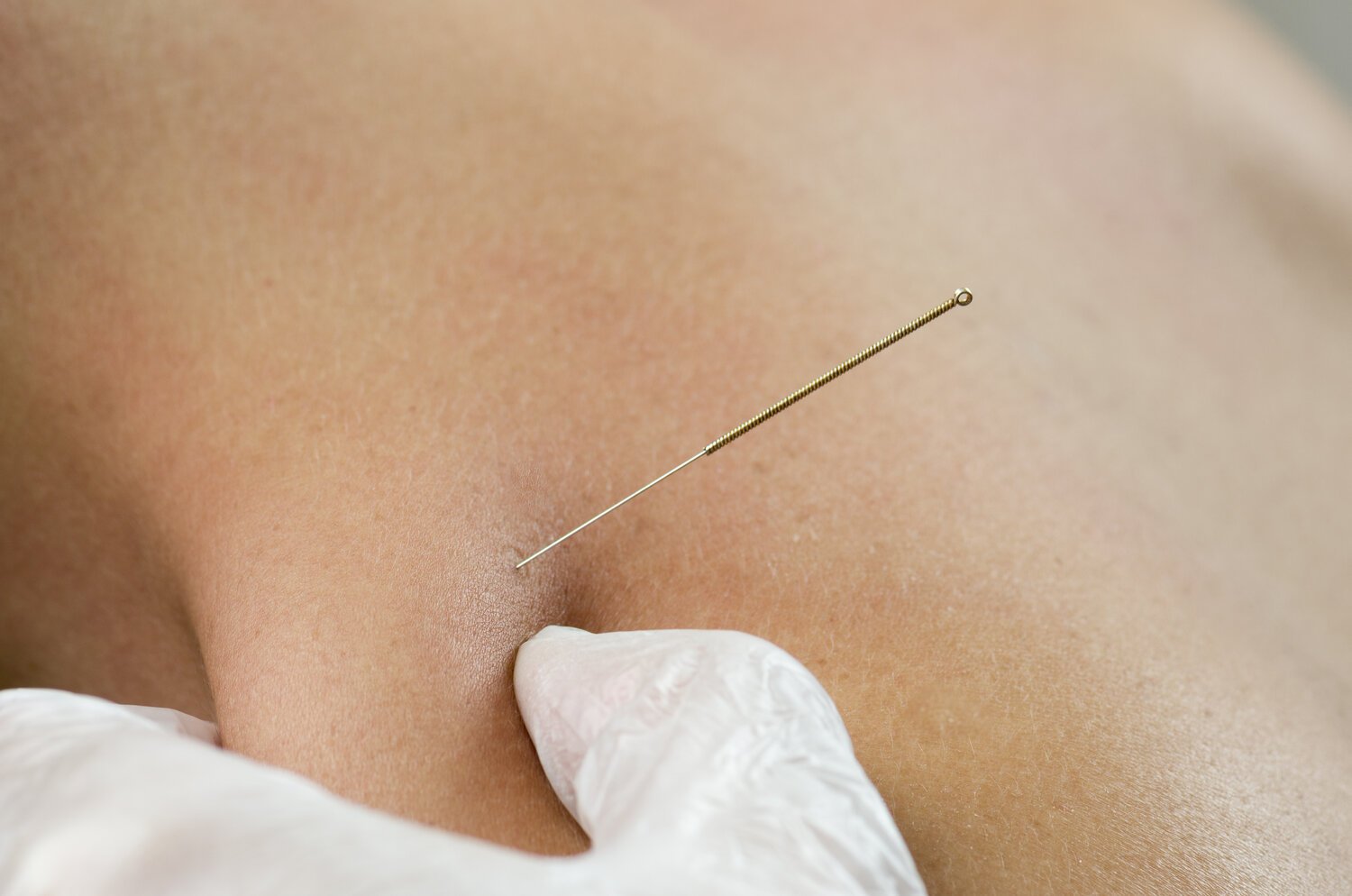Dry Needling / Intramuscular Stimulation (IMS) in Physiotherapy
IMS (Intramuscular Stimulation) / Dry Needling is a treatment technique used by highly trained physiotherapists. In Canada, IMS is widely embraced by both physiotherapists and their patients for its exceptional effectiveness in modulating movement and pain dysfunctions.
What is IMS/Dry Needling and how does it work?
Dry needling, also referred to as Intramuscular Stimulation (IMS), is a therapeutic modality used by Physiotherapists. It is based on the understanding of neuromuscular physiology and the concept of neuropathic pain.
In IMS, fine needles are inserted into myofascial trigger points, which are hyperirritable spots within muscles and surrounding tissues. These trigger points can cause pain and dysfunction due to the sensitization of nerve pathways. By stimulating these points with needles, IMS aims to elicit a "twitch response" or a reflex contraction, which in turn helps reset the nervous system, improve blood flow, and promote healing in the affected areas.
This approach, rooted in modern pain science, distinguishes IMS from traditional acupuncture and emphasizes the neurophysiological mechanisms underlying muscular pain and dysfunction.
What does IMS feel like? Will it cause pain?
The level of discomfort during IMS can differ from patient to patient, however, most are surprised at the relative lack of pain during treatment. The best way to describe the feeling during treatment is an achy sensation that may be mildly painful or uncomfortable. When the needle is inserted into a very tight band or trigger point within a muscle, a brief involuntary muscle contraction may occur (a “twitch response”), which can be momentarily uncomfortable, however very short-lived.
Additionally, after an IMS session, patients may experience some soreness or achiness in the treated areas, which can last for a few hours up to a couple of days. This post-treatment soreness is considered normal and is part of the body's natural response to the needling. It's similar to the soreness you might feel after a workout.
What does an IMS sessions typically look like?
Comprehensive Assessment: Thorough evaluation of your medical history, symptoms, and functional limitations.
Treatment Planning: Development of a targeted treatment plan focusing on addressing neuropathic pain and dysfunctional muscle patterns. This also includes a discussion with the patient about the therapeutic approach and expected outcomes, review of risks and benefits, alternative treatment options, contraindications to needling and expectations on what you should/should not feel during insertion of the needle.
Needle Insertion and Neuropathic Stimulation: Insertion of sterile needles into specific trigger points and taut bands within muscles. This process can be as quick as 5 seconds but may be longer depending on patient comfort level and goals of the treatment. The aim to stimulate neuropathic pathways and provoke a twitch response for neural and muscular reset.
Post-Treatment Strategies: Guidance for managing post-needling sensations and suggested strategies for promoting neural and muscular recovery, such as specific stretches and neural glide exercises.
Integrative Approach: Personalized tailoring of each session based on the patient's unique neural responses and needs.
Is IMS/Dry Needling the same as Traditional Chinese Acupuncture?
No, they are distinct practices. While the needle itself may be similar, the application and rationale of treatment are different.
Traditional Chinese Medicine (TCM) is fundamentally different from the training in physical therapy, influencing where needles are applied and the treatment approach. While some TCM Acupuncturists with musculoskeletal training might incorporate similar techniques, the principles of where and why needles are being placed into the body are vastly different. IMS/ Dry Needling in physiotherapy focuses on muscles and their interaction with the nervous system, differing from the chi/energy and meridian concepts central to TCM acupuncture.
Is there anything that I can and can’t do after my IMS/Dry Needling Treatment?
Following the session, you might experience muscle soreness and discomfort for a period of up to three days, although typically, patients report discomfort lasting only a few hours. This soreness primarily stems from the muscles and can be effectively managed through methods such as utilizing a heating pad over the treatment area and performing gentle stretches. Contrary to popular belief, participating in moderate levels of physical activity/yoga/stretching post treatment is advised and can help decrease post treatment symptoms. As long as you don’t have a marathon or a PB gym session planned the day after your treatment - you’re golden. ;)
Is IMS/Dry Needling a separate service from Physiotherapy?
No, IMS/Dry Needling does not need to be separately booked. After an assessment with me (your physio!), it can be incorporated into your regular physiotherapy sessions and does not need to be booked as a separate treatment.
How many treatment sessions will I need?
Typically, 6-8 sessions may be needed to receive the full benefits of IMS, although this can differ based on factors such as the symptoms' origin, duration, and the patient's overall health. Many clients however, will feel immediate relief after their first session.
Written by Brigitta Hicks, Registered Physiotherapist

